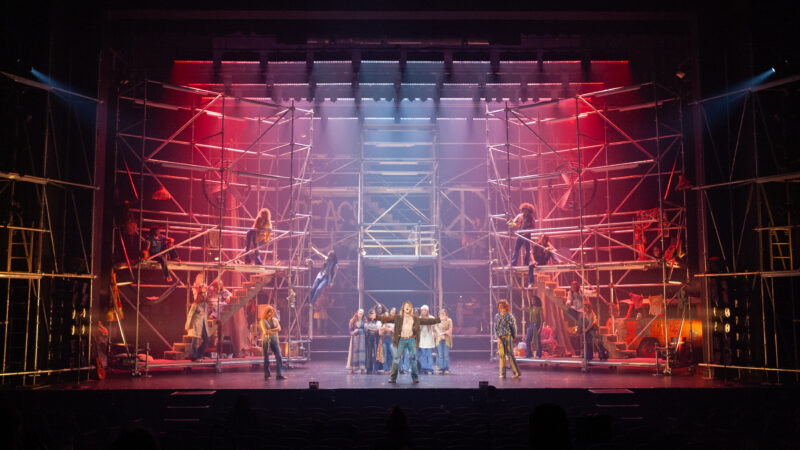
The 1960s saw many wild, wonderful, and colorful transformations, but the modern moving light that would one day lead to the reimagination of stage design was not one of them. That creative breakthrough was still a decade away when Hair, the Tony-winning counterculture musical from James Rado and Gerome Ragni, made its Broadway debut in April, 1968. Still, could there be any better way to convey the ebullient, freewheeling spirit of the Sixties than with bold, dynamic moving fixtures?
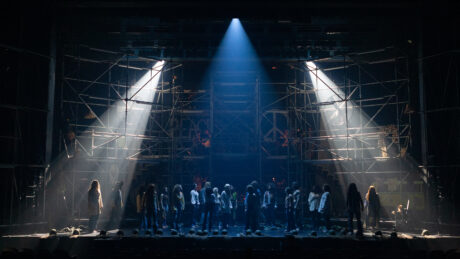 Moving fixtures that were not hidden high up in the truss scaffolding were kept from view in other ways. For example, Basse placed her 42 Rogue Outcast BeamWashes on boom truss far behind the set. “Given how far these fixtures were from the set, I was grateful for their output and throw distance,” she said.
Moving fixtures that were not hidden high up in the truss scaffolding were kept from view in other ways. For example, Basse placed her 42 Rogue Outcast BeamWashes on boom truss far behind the set. “Given how far these fixtures were from the set, I was grateful for their output and throw distance,” she said.
Basse did keep one type of fixtures visible in the set’s scaffolding: her 42 COLORado PXL Bar 16s, using them to be evocative of the old school ramp lamps that were available during the play’s era. She also positioned her 30 Ovation E-260CW ellipsoidals at a very low trim on each side of the proscenium to light the actors, so audiences could see their faces perfectly “without smashing the whole image.”
There was only a single Color STRIKE M in Basse’s rig, but it helped her create a memorable effect. She used it to backlight Claude, the musical’s main character during his first and last appearance on the second level of the central scaffolding tower. Describing the effect, she notes: “It backlit him perfectly in the smoke for those 2 quick and surprising moments.”
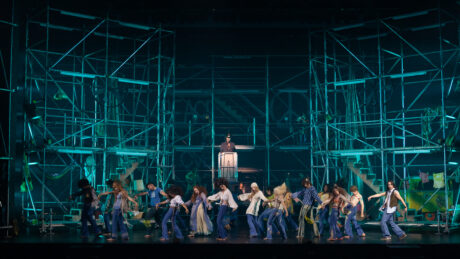 Working closely with her programmer Julien Blais-Savoie, Basse created many other magical moments during this engaging production. “I liked the apparent simplicity of having domestical fluorescent and quartz in the stage, but in good quantities,” she said. “It helped add realism to the set, giving it a 3D aspect. Moreover, we were able to program many punches for the songs, which smoothly brought the audience in a real music hall.”
Working closely with her programmer Julien Blais-Savoie, Basse created many other magical moments during this engaging production. “I liked the apparent simplicity of having domestical fluorescent and quartz in the stage, but in good quantities,” she said. “It helped add realism to the set, giving it a 3D aspect. Moreover, we were able to program many punches for the songs, which smoothly brought the audience in a real music hall.”
Basse also appreciated the saturated looks in the second act when the main character has a bad trip. With different colors on each side of the layer, along with some subtle effects, the audience felt ready to live through a very special bad trip as well.
“I’ve been working with the director Serge Denoncourt on several other musical and theatral productions, such as ‘Mademoiselle Julie, ‘Je vais t’aimer’ and ‘Annie,’” said Basse. “We both love slick, white, and sophisticated lighting looks, but on this production the challenge for both of us was to go where nobody, including us, expected us to go — back to typical 1968 Broadway looks.”
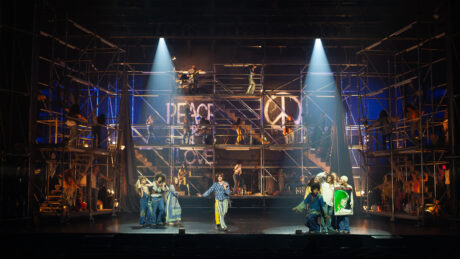 Taking this journey back in time involved creating bold looks for a modern audience, while also adhering to historical standards. It was a balancing act that Basse and her colleagues, navigated brilliantly.
Taking this journey back in time involved creating bold looks for a modern audience, while also adhering to historical standards. It was a balancing act that Basse and her colleagues, navigated brilliantly.
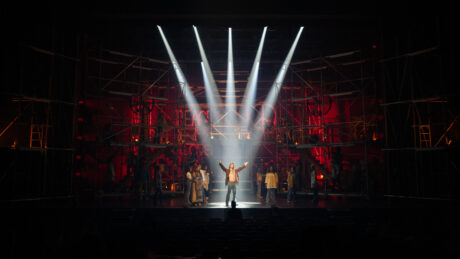 Lighting Designer Julie Basse and her colleagues, including Director Serge Denoncourt, faced this question when they began work on a just-concluded two-month run of the acclaimed musical in Montreal and Quebec. Happily, they were able to call forth all of the visual power of moving fixtures, while still remaining true to historical accuracy.
Lighting Designer Julie Basse and her colleagues, including Director Serge Denoncourt, faced this question when they began work on a just-concluded two-month run of the acclaimed musical in Montreal and Quebec. Happily, they were able to call forth all of the visual power of moving fixtures, while still remaining true to historical accuracy.

